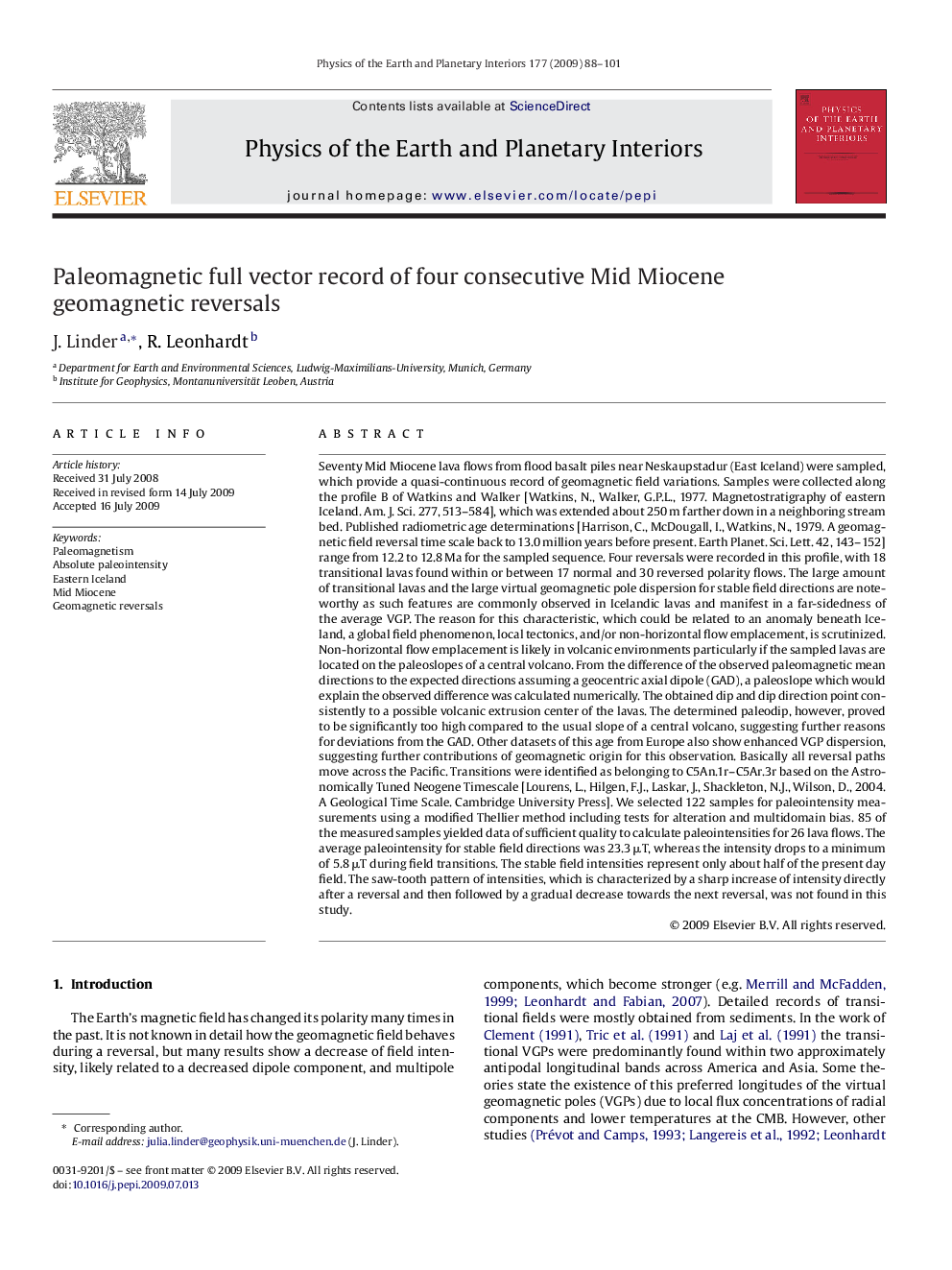| Article ID | Journal | Published Year | Pages | File Type |
|---|---|---|---|---|
| 4742433 | Physics of the Earth and Planetary Interiors | 2009 | 14 Pages |
Seventy Mid Miocene lava flows from flood basalt piles near Neskaupstadur (East Iceland) were sampled, which provide a quasi-continuous record of geomagnetic field variations. Samples were collected along the profile B of Watkins and Walker [Watkins, N., Walker, G.P.L., 1977. Magnetostratigraphy of eastern Iceland. Am. J. Sci. 277, 513–584], which was extended about 250 m farther down in a neighboring stream bed. Published radiometric age determinations [Harrison, C., McDougall, I., Watkins, N., 1979. A geomagnetic field reversal time scale back to 13.0 million years before present. Earth Planet. Sci. Lett. 42, 143–152] range from 12.2 to 12.8 Ma for the sampled sequence. Four reversals were recorded in this profile, with 18 transitional lavas found within or between 17 normal and 30 reversed polarity flows. The large amount of transitional lavas and the large virtual geomagnetic pole dispersion for stable field directions are noteworthy as such features are commonly observed in Icelandic lavas and manifest in a far-sidedness of the average VGP. The reason for this characteristic, which could be related to an anomaly beneath Iceland, a global field phenomenon, local tectonics, and/or non-horizontal flow emplacement, is scrutinized. Non-horizontal flow emplacement is likely in volcanic environments particularly if the sampled lavas are located on the paleoslopes of a central volcano. From the difference of the observed paleomagnetic mean directions to the expected directions assuming a geocentric axial dipole (GAD), a paleoslope which would explain the observed difference was calculated numerically. The obtained dip and dip direction point consistently to a possible volcanic extrusion center of the lavas. The determined paleodip, however, proved to be significantly too high compared to the usual slope of a central volcano, suggesting further reasons for deviations from the GAD. Other datasets of this age from Europe also show enhanced VGP dispersion, suggesting further contributions of geomagnetic origin for this observation. Basically all reversal paths move across the Pacific. Transitions were identified as belonging to C5An.1r–C5Ar.3r based on the Astronomically Tuned Neogene Timescale [Lourens, L., Hilgen, F.J., Laskar, J., Shackleton, N.J., Wilson, D., 2004. A Geological Time Scale. Cambridge University Press]. We selected 122 samples for paleointensity measurements using a modified Thellier method including tests for alteration and multidomain bias. 85 of the measured samples yielded data of sufficient quality to calculate paleointensities for 26 lava flows. The average paleointensity for stable field directions was 23.3 μT, whereas the intensity drops to a minimum of 5.8 μT during field transitions. The stable field intensities represent only about half of the present day field. The saw-tooth pattern of intensities, which is characterized by a sharp increase of intensity directly after a reversal and then followed by a gradual decrease towards the next reversal, was not found in this study.
